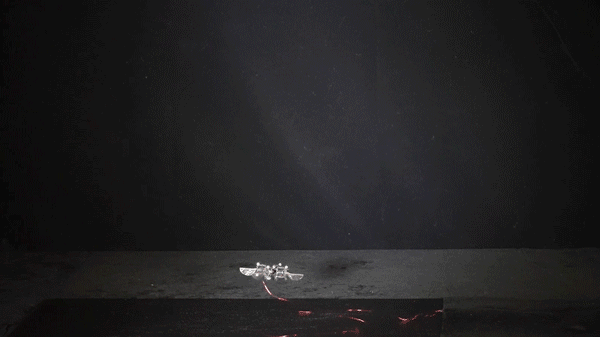
© Mit.edu, Kevin Chen, Suhan Kim & MIT Researchers
After earning his undergraduate degree in Mechanical and Aerospace Engineering at Seoul National University, Suhan Kim moved to Pittsburgh, PA, where he earned a Master’s Degree in Mechanical Engineering at Carnegie Mellon University. Today, he is a PhD student in the Soft and Microrobotics Laboratory in the Department of Electrical Engineering and Computer Science at MIT in Cambridge, MA. Suhan acted as the lead author for a paper published in the January 2025 issue of the prestigious journal Science Robotics. The paper, titled Acrobatics at the Insect Scale: A Durable, Precise, and Agile Micro–Aerial Robot, reveals Suhan’s and his colleagues’ findings on the development of a robust micro-drone.
For many years, drones were relegated to military, hobby, or research and development applications. Today, the drone industry is a booming success, which has only strengthened the need for advanced drone research and development by teams like the one at MIT’s Soft and Microrobotics Laboratory. Under the guidance of the lab’s principal investigator, Associate Professor Kevin Chen, Suhan and his partners are developing drones that could one day be used to artificially pollinate crops. As natural pollinators have been found to be under threat from various factors, such drones could prove to be vital for agriculture.
The team took inspiration for their drone directly from pollinators like bees, studying how they maneuver and use their wings. The first attempt, as Professor Chen explained, consisted of four identical connected units. Each unit had a pair of wings. Altogether, the rectangular drone was roughly the size of a microcassette. However, as Professor Chen said, “There is no insect that has eight wings.” He went on to say that though the eight wings made it difficult for the drone to remain stabilized, the four units performed well when separated. So, they reengineered the model to be even more insect-like.
The drone now has only one wing on each unit. To perfect the way the wings perform, the team took a closer look at how a bee’s wings work. A bee has highly tuned muscles that control their wings for extreme agility. Suhan and his team had to make actuators that mimic tiny artificial muscles for the drone’s wings. “These tiny, soft actuators are made from layers of elastomer sandwiched between two very thin carbon nanotube electrodes and then rolled into a squishy cylinder,” explains an MIT press release on the project. “The actuators rapidly compress and elongate, generating mechanical force that flaps the wings.”
Though the team recognizes that the artificial wings can’t come close to replicating the complexity of a bee’s wing muscles, they were able to design a drone that can sustain complex flight patterns. As Suhan points out in the paper, previous similar insect-sized drones (micro–aerial vehicles, or MAVs) are limited to about 10 seconds of flight time before component failure. In contrast, Suhan’s drone was able to greatly surpass these results. “Here,” he states in the paper’s introduction, “we developed a 750-milligram flapping-wing MAV that demonstrated substantially improved lifespan, speed, accuracy, and agility. With transmission and hinge designs that reduced off-axis torsional stress and deformation, the robot achieved a 1000-second hovering flight, two orders of magnitude longer than existing subgram MAVs.”
The drone, which weighs less than a standard paperclip, can perform acrobatic flight. It can spin, flip, and even fly along a complex path to spell out “MIT,” the team revealed in video footage of test flights. While Suhan and his team proved the robustness of the drone’s hardware, there is still one major flaw in the system’s practicality: its lack of an onboard power source. Because the drone is so small, it cannot support the weight of a battery. Therefore, each of the four individual units is tethered to a small wire for power.
Tether-powered drones do have a place within the drone industry, but Professor Chen said that the team’s next steps would involve preparing the drone for onboard sensors and power sources. “At the end of the day,” Professor Chen said of his students, “we’ve shown flight that is 100 times longer than anyone else in the field has been able to do, so this is an extremely exciting result.” Groundbreaking research and development projects like those of Suhan and his team are critical for the expansion of the drone industry. By combining innovative engineering with inspiration from nature, they have pushed the boundaries of what is possible in drone technology.
|